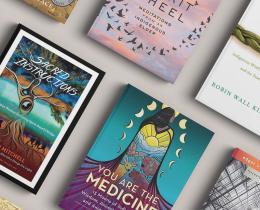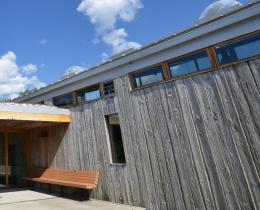Throughout most of history, when a farmer bought seeds, they had the right to reproduce, save, and then sell them. They did not have to purchase seeds every year from a seed company.
Until 1924, the U.S. Department of Agriculture “not only freely developed and distributed seeds, but encouraged seed saving by farmers,” writes Haley Stein in the Northwestern Journal of Technology and Intellectual Property. In the late 19th century, the USDA spent one-third of its budget on seed collecting and free distribution, Stein points out.
Today, the situation is far different. In 1996, the first genetically modified patented seeds were planted, following a court case 16 years earlier that established the legal framework for patenting seeds. Within one year, 11.5 million acres of genetically modified corn and soybeans were cultivated in the United States. None of the seeds could legally be saved by farmers for another year; even if they could, some would not be able to reproduce due to their particular genetic engineering.
Leaving aside the issues of the efficacy, environmental risks, and potential health effects of genetically modified crops versus their traditionally grown counterparts, this shift is fundamentally one of enclosing the commons—of privatizing what once was public property. It also contributes to the serious issue of decreasing diversity in food crops we cultivate.
Vandana Shiva, the renowned physicist turned environmental and feminist activist, calls seeds “priceless.”
“The seed,” she says in a recent interview with Yes! magazine, “in its essence is all of the past evolution of the Earth, the evolution of human history, and the potential for future evolution. The seed is the embodiment of culture because culture shaped the seed with careful selection—women picked the best, diversified. So from one grass you get 200,000 rices.”
Today, in the corporatized vision of seed distribution, where life itself is patented, leading commons philosopher David Bollier, says, “Nature has no right to reproduce itself. The public has no general right to enjoy the gifts of nature.”
In Bollier’s view, “GMO patent-holders have utterly shifted the moral presumptions about what should be normal and proper… And so the pernicious logic of marketization overwhelms the commons by enshrining a theory of value that deliberately ignores custom, public needs, and natural processes.”
The Future of Seed Saving
One way of pushing back against this—and at the same time attempting to build a biodiverse climate-resistant agriculture—is through the establishment of seed banks and seed libraries.
In India, Vandana Shiva’s organization, Navdanya, has helped create about 40 seed banks across the nation. In these places, Shiva says, “we collect and save seeds, rescue them from disappearance, multiply them, and then distribute them according to farmers’ needs.”
In the far north of Norway, the Svalbard Global Seed Vault acts as a global seed bank to preserve the genetic diversity of the world’s food crops.
Describing its mission, the Global Seed Vault explains, “The loss of biological diversity is currently one of the greatest challenges facing the environment and sustainable development. The diversity of food crops is under constant pressure. The consequence could be an irreversible loss of the opportunity to grow crops adapted to climate change, new plant diseases, and the needs of an expanding population.”
Across the United States, as well, there is a growing movement to save seeds. Some, such as the Hudson Valley Seed Library operate as small businesses. Others, like the Hawaii Public Seed Initiative work with farmers and gardeners on an educational basis to encourage seed saving. Other still, operate from local public libraries—revitalizing another element of the commons in the process.
Though established for different reasons and operating on different scales, all of these examples preserve and make available the countless years of evolution and knowledge contained within a single seed.
They also, as Shiva reminds us, help overcome the separation between humans and nature that is at the root of our ecological problems.
“Some people [overcome this separation] through meditation and yoga, but a lot more are doing it just by planting a seed and growing a garden. In planting a seed, you are one with the cycles and regenerative capacity of life.”



